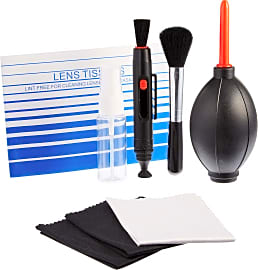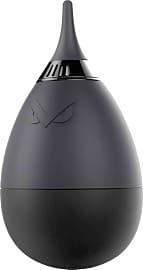The 8 Best Air Blowers For Cameras

This wiki has been updated 20 times since it was first published in October of 2019. Camera equipment can be expensive, so it makes sense to take good care of it. Unlike with some electronics, you can't use a can of compressed air to clean a sensor or a lens, as you risk coating it in an oily propellant. These air blowers are an eco-friendly and safer solution for keeping all your gear in pristine condition. When users buy our independently chosen editorial recommendations, we may earn commissions to help fund the Wiki.
Editor's Notes
November 12, 2019:
Ask anybody who knows a photographer, and there’s a good chance they’ll tell you that the professional or hobbyist in question handles his camera with the kind of care that’s more fitting for one’s first-born child – and with good reason! Not only are cameras expensive, but they’re also the instrument we depend upon to capture some of our life’s most precious moments. And during the smartphone era, where the lion’s share of the population carries a capable point-and-shoot option in their pocket at all times, chances are that if you’ve decided to invest in a nice DSLR or mirrorless unit, it’s because you want something a cut above the norm – a luxury that almost certainly commands a budget-bending price tag and justifies diligent maintenance.
Here’s where air blowers come in!
You still might find a few folks using a can of compressed air to clean their cameras, but this practice comes with the risk of accidentally discharging the unit’s propellant in liquid form, coating your camera’s sensor in the oily film and cursing your photos with a consistent blurriness from there on in. Air blowers for cameras work in a manner similar to fireplace bellows, using atmospheric air to create short, concentrated gusts of wind to get the grit off your gear. They’re inexpensive and effective.
Here’s a few things to look for as you shop:
Size: This might seem like an inconsequential consideration, when the largest options in this category have a size and shape that’s comparable to a miniature Nerf football, but when you’re trying to maximize the amount of gear you can tote in your camera bag, a matter of inches might make a difference. The Giottos AA1920, for example, is a more compact version of the Giottos AA1900. The VSGO DDA-10 is another option with a slight size that lends itself to portability. Since offerings in this category tend to be quite affordable, and larger options tend to blow better, some photographers have reported ordering two blowers: a small one for their road bag and a larger one for the lab.
Inlet/Filter: Blowing abrasive debris onto your camera’s sensor or lenses would completely defeat the purpose, so several options in this category have made product-design provisions to ensure their blower won’t accidentally inhale any hazardous grit. While both the Giottos AA1900 and Giottos AA1920 have an inlet valve that prevents against backflow, the JJC CCD CMOS goes a step further, with a 21-micron, replaceable filter to keep any unwanted particles out the device’s bladder.
Extras: A solid blower is but one of many maintenance tools a photographer should stay equipped with. So, don’t be afraid to consider a cleaning kit like the Altura Photo KM0897 or the Mouriv Professional Bundle, which come with a selection of brushes and wipes to help bolster your cleaning apparatus.













